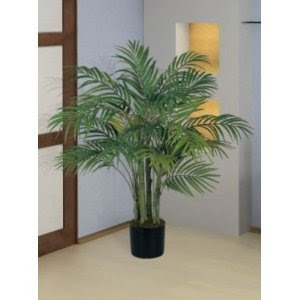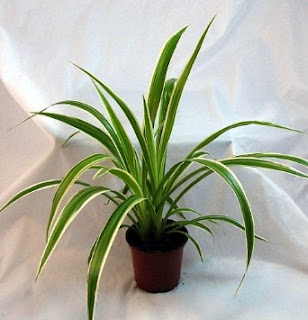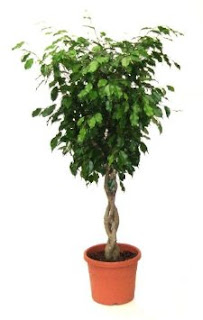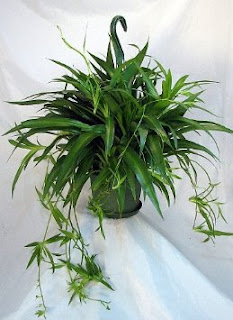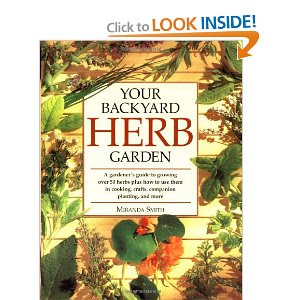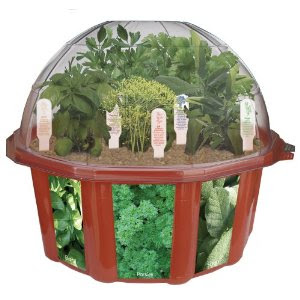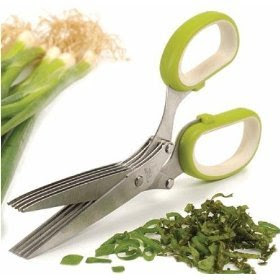Saturday, October 6, 2012
Starting Seeds
If you want a real variety in your vegetable and flower gardens it usually means buying seeds. Seeds can be sown directly in the garden or started indoors.
You can use plastic seed starting trays. The advantage is that you can use these year after year. The disadvantage is plastic is not environmentally friendly.
You can start you seeds in starter pots made of peat moss. One of the biggest advantages to these over plastic is very little transplant shock because you transplant container and all. The dis advantage is you have to buy them every year.
If you, or anyone you know, gets take-out coffee in a cardboard you ca re-use these to start your seeds. Just fill with soil and plant your seeds. You can write the seeds you are starting with marker on the side of the cup. When it comes time to transplant simply score the sides of the cup with a utility knife ad plant cup and all. The cup will decompose after being buried.
Another good thing to start seeds in is egg shells. Rinse the shells after cracking your eggs. Just fill with soil ad plant your seeds. When ready to transplant squeeze the shells slightly to crack and plat in your garden. The added benefit is the egg shells help to fertilize your plats as they grow.
You can also buy a special pot maker that turns your old newspapers into seed starting pots. The newspaper will decompose after it is planted in your garden.
Below you will find some helpful books on starting and saving seeds.
Friday, October 5, 2012
Time to Move Inside
As we put our gardens to bed for the winter and move indoors many of us turn our attention to house plants. There are many things that contribute to unhealthy air in our homes. Carpeting, furniture, the paint on our walls and many other things. There are several house plants that actually clean our indoor air of these toxins.
You should have one house plant for every 10 square yards of floor space.
ARECA PALM
This palm is an easy way to add humidity to a room. They are consistently rated among the best houseplants for removing all indoor toxins. Great in a planter. Easy Care.
The Chrysalidocarpus lutescen, or the Areca palm, whose green feathering fronds fan out from several trunks makes a lovely plant for the home or office. With the correct amount of watering, soil maintenance and lighting, this species makes an aesthetically pleasing houseplant.4-8 weeks to germinate. In addition, this palm is an easy way to add humidity to a room Just put a few areca palms in it. These palms release copious amounts of water into the air, and remove chemical toxins too. They are consistently rated among the best houseplants for removing all indoor toxins tested.
OCEAN SPIDER PLANT
Homegrown by Hirt's Gardens. Great gift for the home, apartment, office, dorm or den
Prefers bright, indirect light or artificial light. Keep evenly moist, not wet or dry
The plant you will receive is growing in a 4" pot.
Ocean is a new spider plant with more white in the leaves and white flowers on long stems that seem to dance in the air.
Spider Plants make excellent house plants or indoor plants as they are not only such easy-growing plants but have beneficial properties in cleansing the air of pollutants, especially formaldehyde and carbon monoxide. As it tolerates artificial lighting very well and has air purifying abilities, it's most ideal in office environment where electronic pollutants are emitted.
Requires bright light or filtered sunlight for best growth and vibrant leaf colors. Never locate Spider Plants in full sun that will scorch their foliage. Remove yellow or dried leaves to keep it tidy. Fertilize sparingly as excess nutrients can retard its ability to produce more plantlets.
PEACE LILY
Easy to grow house plant. Grows in low light. Blooms year round. Keep evenly moist. The plant you will receive is growing in a 4" pot.
Spathiphyllum the genus name means, literally, "leaf spathe", with spathe defined as "A large bract or pair of bracts sheathing a flower cluster, as a spadix." You're likely to know it as "Peace Lily". Its' widespread interior use is due to its exceptional acclimation to low light conditions. There are approximately 30 different species of Spathiphyllum, some are native to Central and South America. Interestingly, two species are found on the other side of the world, in Malaysia, and one is native to both Costa Rica AND the Philippines. A fascinating plant that has somehow managed to circle the world long before man discovered its beauty. Wherever it is found, it thrives in the deep shade of the humid tropical rain forest under-story.
The Peace Lily is very different from many plants used today indoors. They let you know quickly when they are dry by a noticeably droop in the foliage. They'll bounce back quickly once watered. The proper time to water them is when the leaves start to droop, just a little. They are one of the best low light house plants!
WEEPING FIG
It is a very popular indoor tree that can grow rapidly. This is the Ficus tree so often seen in malls. Often used for Bonsia. Fast Growing. Seeds are Small.
This is the Ficus tree so often seen in malls. It is a very popular indoor tree that can grow rapidly and may reach 40 if not kept pruned. The trees are sometimes seen with braided trunks, or spiraled shape trunks or grown as small bonsai. The seeds are very small and are grown by placing them on top of the soil. Broadcast the small seeds on the surface of a well draining soil mixture. Keep warm, damp and in filtered sunlight.
SHAMROCK SPIDER PLANT
Proper name: Chlorophytum comosum. Great gift for the home, apartment, office, dorm or den. Prefers bright, indirect light or artificial light. Keep evenly moist, not wet or dry. The plant you will receive is growing in a 6" Hanging Basket.
Spider Plants make excellent house plants or indoor plants as they are not only such easy-growing plants but have beneficial properties in cleansing the air of pollutants, especially formaldehyde and carbon monoxide. As it tolerates artificial lighting very well and has air purifying abilities, it's most ideal in office environment where electronic pollutants are emitted.
Requires bright light or filtered sunlight for best growth and vibrant leaf colors. Never locate Spider Plants in full sun that will scorch their foliage. Remove yellow or dried leaves to keep it tidy. Fertilize sparingly as excess nutrients can retard its ability to produce more plantlets. The plant you will receive is growing in a 6" Hanging Basket.
Monday, October 1, 2012
Culinary Herbs
Herbs can be used in many was, from cooking to medicinal to crafts. Many herbs are a source of essential oils. Herbs can be used to add flavour food, and can be used fresh or dried. They are easy to grow.
In the book pictured to the left you will find everything you need to know about growing your favorite herbs using safe, natural, all-organic methods!
Practical tips and advice on all aspects of successful herb growing.
A wealth of great ideas and helpful how-to on using herbs in cooking, crafts, cosmetics, health care, insect repellents, and more.
Illustrated herb directory featuring all the most popular herbs-- from aloe to yarrow-- each with complete information on growing, care, harvesting, and uses. There is a link to this book at the end of this post.
Herbs can be grown outdoors or indoors. You can lace potted herbs in a sunny window, or
you can grow them in a terrarium like the one to the left. If you are using dried herbs when cooking the herb should be crushed before adding to release it's flavour and essential oils. If using fresh herbs they should be
finely chopped using either a sharp knife or scissors. The scissors pictured to the left make quick work of chopping fresh herbs finely. Links to the products featured in this post are below.
Subscribe to:
Posts (Atom)
